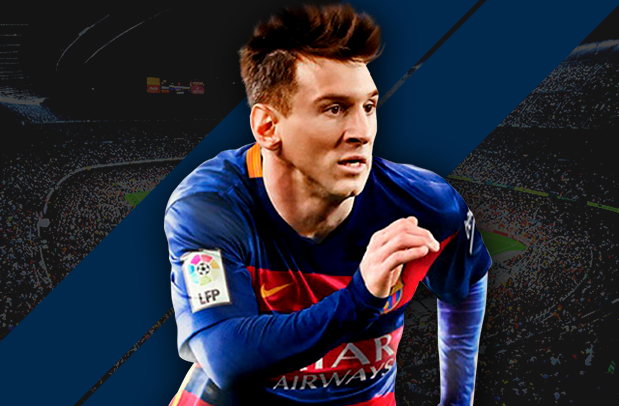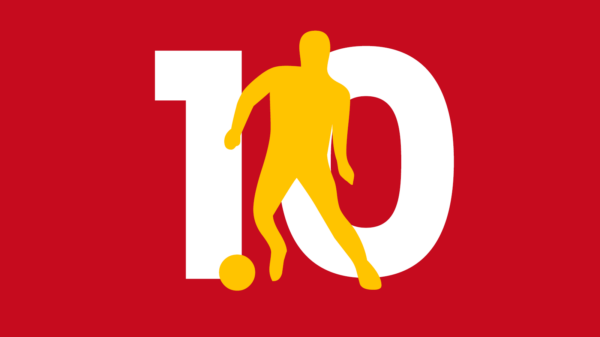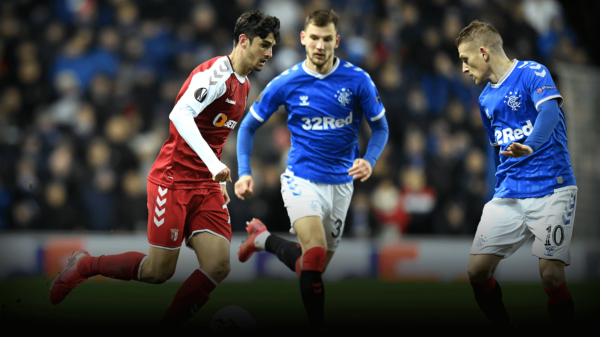Alongside their incredible goalscoring records, the duo of Lionel Messi and Cristiano Ronaldo have always been supremely fit. Seemingly above the various knocks and niggles that causes mere mortals suffering, the exceptional injury record played an important role in the churning out of ridiculous goal scoring numbers. Recent times have seen the duo suddenly become more susceptible to injury though. Lionel Messi has been out of action for a while now and with his return imminent, Viraj Thakor has a look at how Barcelona have coped without the Argentine genius.
When you think of the iconic figures that have graced the Nou Camp turf over past decades, the likes of Johan Cruyff, Michael Laudrup, Rivaldo and Ronaldinho all spring to mind, however, there is one man who is undoubtedly at the very top of that list. Enter Lionel Messi, a player for whom many involved in football have run out of superlatives with which to describe. Jose Mourinho summed up his influence on the modern game quite concisely when he stated that, “In 10 years’ time, without Lionel Messi, the map of European football is going to change”.
A vital element of Barcelona’s unprecedented success in the last decade has not only been the ability of Messi to obliterate defences all over Spain and Europe, but also his excellent level of fitness, as he has seldom been sidelined with a serious injury since he rose to stardom in 2007. Although Barcelona brought in Neymar and Luis Suarez for a combined cost of over 150 million euros, with a view of easing the goal-scoring burden on the Argentinian wizard, there still remained questions on how the Catalan giants could cope without Messi in the side for a prolonged period.

26th September 2015. The hosts are in early command against newly promoted Las Palmas as Marc Bartra carries the ball out of defence and sprays a delightful 50 yard cross-field diagonal towards the feet of Messi, who displays a flawlessly deft first touch and bears down on goal with the inevitable feeling of goal number 430. However, Pedro Bigas is quickly across and smothers the attempt brilliantly as Messi not only goes down, but also to the shock of the Nou Camp faithful, is withdrawn from action in the 4th minute. His reaction was perhaps telling as he ripped off the captain’s armband and threw it to the ground in sheer frustration. After a scan the following day, and to the dismay of all those involved with FC Barcelona, the news emerged that Messi had suffered a torn lateral collateral ligament in his left knee and would be out for approximately 7 to 8 weeks.
Not only did this send shockwaves through Spanish football, but also represented arguably Luis Enrique’s toughest managerial challenge to date, as to how to alter his system and personnel to accommodate the loss of his star man. Since his arrival last year and the signing of Luis Suarez, Enrique slightly adjusted Messi’s role to that of a right-sided inside forward, with the aim of isolating him against the opposition full-back in 1v1 situations and also cutting inside onto his stronger foot to create openings for Suarez and Neymar, who scored 25 and 39 goals respectively, in addition to Messi’s astounding haul of 58. These numbers represent arguably the deadliest attacking trident of our generation, with barely a superiority complex in sight.
This tactical tweak gave Messi the positional freedom to excel not only as a goal scorer (cutting inside onto his stronger side), but also as a creator. The role of Ivan Rakitic was also significant, as he assumed box-to-box responsibilities, a contrast to that of his predecessor, Xavi, therefore Enrique relied on the Argentine for guile in addition to goals. The video below illustrates this point perfectly, whereas in previous years he may have been on the end of such a magnificent pass, this time he provided the assist from a deeper role on the right side, with Pep Guardiola’s reaction summing up the quality of the goal. It is also worth pointing out that this goal came against Manchester City, for whom David Silva is renown for similarly exquisite passes.
https://www.youtube.com/watch?v=1k3ZWZ3D-OU
Here lied Enrique’s major tactical dilemma and a test of his managerial nous, how to not only replace Messi’s menacing goal threat from the right, but also his often overlooked guile and vision which has been a major reason why Neymar and Luis Suarez have flourished since their arrivals. His initial response was not a fundamental change of formation, but a simple personnel change, with the hard-working Sandro Ramirez and the technically gifted Munir taking it in turns to fill in on the right side of the front three, both exciting prospects for the future. Coincidently, Andres Iniesta’s absence for four weeks during this period meant that Barcelona would be without their two most creative players for a significant period, providing an even sterner examination of Enrique’s managerial repertoire.
The slight alteration of Barcelona’s setup under Enrique and their increased tendency to build attacks at a greater speed rather than their famed tiki-taka approach, meant that perhaps this loss would not be as significant under Enrique as it may have been under previous managers, Guardiola in particular. With limited creative talent at his disposal, Enrique has realised that he can no longer allow teams to sit back with caution, but instead attack in greater numbers and invite the opposition to throw men forward in the hope of a counter attack, which effectively opens the game up entirely. This point is illustrated by the goal below, in which although Eibar are 1-0 ahead at the Nou Camp after 20 minutes, Barcelona still manage to effectively create a 5v6 situation in the attacking third by tempting Eibar players to stay further up the pitch, therefore allowing themselves greater space to exploit. It is also worth noting that the goal stems from a cross, followed by a headed finish by Suarez, perhaps exemplifying their subtle shift to a more direct route to goal.
https://www.youtube.com/watch?v=azibtIc_vOQ
Another noticeable feature of Barcelona in this recent period without Messi has been the willingness of their central midfield players, in particular Ivan Rakitic, to make late runs into the box beyond Suarez. Rakitic’s brace away to BATE Borisov in the Champions League came as a result of him taking up some very advanced positions in the attacking third, with most defenders monitoring the movement of Suarez and Neymar. The image below from Matchday 2 against Bayer Leverkusen illustrates this more direct approach as both Rakitic and Iniesta are looking to make runs into the box and provide greater numbers in attack, whereas last season you would not see both central midfielders committing themselves this high up the pitch as the onus was on Messi to pick up the ball in deeper areas and drag defenders out of position and allow the likes of Neymar and Suarez to exploit space in behind the backline.

This has made for some very entertaining affairs, particularly at the Nou Camp with away sides prepared to commit players forward, and games such as the 5-2 win over Rayo Vallecano and the 3-1 success over Eibar being good examples of this. Therefore it comes as no surprise that Barcelona have attempted an average of more shots per game without Messi (21) than with Messi (18), due to the greater space afforded to them in the attacking third by the opposition, in addition to the reliance on a more direct route to goal, without the craft and trickery of their star man. Although in previous years Barcelona may have not implemented this tactic, the presence of Neymar and Luis Suarez has meant that it has been a smart tactical alteration, to the credit of Luis Enrique. The Catalan giants’ record since Messi’s injury reads an impressive W8 D1 L1, together with a decent outlay of 23 goals.
It is impossible to analyse Barcelona’s performances in the absence of Messi, without mentioning the scintillating form of Neymar, who has arguably been the best player in Europe this season. Given the task of ensuring Barcelona retain their goal-scoring edge, the Brazilian superstar has excelled in an inside forward role on the left, with a licence to roam the attacking third, similar to that of Cristiano Ronaldo at Real Madrid. Neymar has contributed 10 goals and 7 assists since Messi’s injury, with a memorable solo effort against Villareal last week the icing on the cake. It is clear that he has added a clinical edge to his already impressive all-round offensive game that must surely put him amongst the top 5 attacking players in the world, with Luis Suarez also a possible candidate.
In what would have been considered a worrying period for Barcelona fans, has in fact turned out to be more of a pleasant surprise. Neymar and Suarez have combined menacingly to great effect to keep the Catalans on the right track, whilst Luis Enrique has shown the kind of tactical flexibility that is a key component of all top managers’ repertoire and developed a style that has proved it can work without the legendary Argentine. However, what you can be sure of is that when the name Lionel Messi is most likely announced in the starting line up this Saturday afternoon in El Clásico, it will be greeted with passionate and loud cheers from the Catalans stationed in the upper tier of the Santiago Bernabéu.
Written by Viraj Thakor
- How have Barcelona coped without Messi? - November 19, 2015



























































